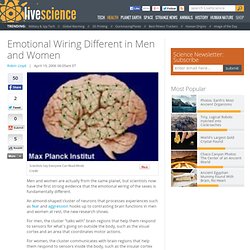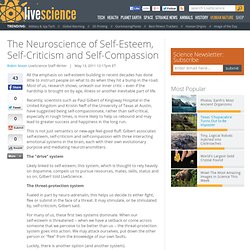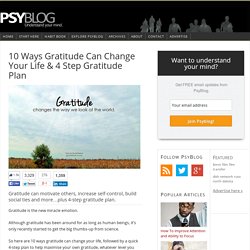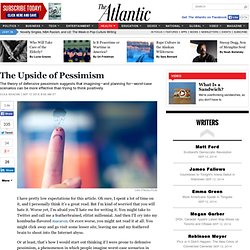

The Neuroscience of Emotions. Emotions and the Brain. Emotions and the Brain. U.S. researchers map emotional intelligence of the brain. We tend to think of reason and emotion as being two different things, but it turns out that there may not be a choice between the heart and the head.

A University of Illinois team, led by neuroscience professor Aron Barbey, has made the first detailed 3D map of emotional and general intelligence in the brain, that shows a strong overlap of general and emotional intelligence. Reason and emotions aren’t opposites, but rather two types of intelligence or, perhaps, two aspects of one intelligence. Reason comes under the heading of general intelligence. That covers higher-order mental processes that include reasoning, attention and perception, and memory and language. Emotions are described as emotional intelligence, which takes in perceiving, immediate processing and applying emotional and social content, information and knowledge. There are a number of theories about how general and emotional intelligence are related. Relationships between general and emotional intelligence.
Emotional Wiring Different in Men and Women. Men and women are actually from the same planet, but scientists now have the first strong evidence that the emotional wiring of the sexes is fundamentally different.

An almond-shaped cluster of neurons that processes experiences such as fear and aggression hooks up to contrasting brain functions in men and women at rest, the new research shows. For men, the cluster "talks with" brain regions that help them respond to sensors for what's going on outside the body, such as the visual cortex and an area that coordinates motor actions. For women, the cluster communicates with brain regions that help them respond to sensors inside the body, such as the insular cortex and hypothalamus. These areas tune in to and regulate women's hormones, heart rate, blood pressure, digestion and respiration. Cahill and his co-author Lisa Kilpatrick, scanned the brains of 36 healthy men and 36 healthy women. The Neuroscience of Self-Esteem, Self-Criticism and Self-Compassion.
All the emphasis on self-esteem building in recent decades has done little to instruct people on what to do when they hit a bump in the road.

Most of us, research shows, unleash our inner critic – even if the hardship is brought on by age, illness or another inevitable part of life. Recently, scientists such as Paul Gilbert of Kingsway Hospital in the United Kingdom and Kristin Neff of the University of Texas at Austin, have suggested being self-compassionate, rather than self-critical, especially in rough times, is more likely to help us rebound and may lead to greater success and happiness in the long run. This is not just semantics or new-age feel-good fluff. Why Emotion Will Usually Outweigh Logic In The Audience’s Brains. Many people like to think that business is all about logic, and that customers behave having rationally analysed all available data, considered the various pros and cons of different courses of action and come to a logical conclusion.

Although it’s very difficult for very logical people to understand (e.g. accountants, engineers, IT professionals), this could not be further from the truth, as the quote above from Buck Rogers of IBM demonstrates (and he was talking about mainframe computers!). The reality is that a high percentage of the time people make decisions based purely on emotion. They may well rationalise that decision afterwards by using logic, but the decision itself is made on emotion. Logic plays only a secondary role. Like it Or Not, Emotions Will Drive the Decisions You Make Today. Your emotions will drive the decisions you make today, and your success may depend upon your ability to understand and interpret them. When an emotion is triggered in your brain, your nervous systems responds by creating feelings in your body (what many people refer to as a "gut feeling") and certain thoughts in your mind. A great deal of your decisions are informed by your emotional responses because that is what emotions are designed to do: to appraise and summarize an experience and inform your actions.
But if an emotion is triggered, just how much should you pay attention to your visceral response and the thoughts it creates? Emotions are not particularly sophisticated or precise, but their speed and utility make up for what they lack in sophistication and precision. The neuroscience of happiness. They say money can’t buy happiness. But can a better understanding of your brain? As recent breakthroughs in cognitive science break new ground in the study of consciousness — and its relationship to the physical body — the mysteries of the mind are rapidly becoming less mysterious. But does this mean we’ll soon be able to locate a formula for good cheer? The Neuroscience of Looking on the Bright Side. Ask a bride before walking down the aisle “How likely are you to get divorced?”

And most will respond “Not a chance!” Tell her that the average divorce rate is close to 50 percent, and ask again. 10 Ways Gratitude Can Change Your Life & 4 Step Gratitude Plan. Gratitude can motivate others, increase self-control, build social ties and more…plus 4-step gratitude plan.

Gratitude is the new miracle emotion. Although gratitude has been around for as long as human beings, it’s only recently started to get the big thumbs-up from science. So here are 10 ways gratitude can change your life, followed by a quick 4-step plan to help maximise your own gratitude, whatever level you start from. There’s even a trick for those suffering from ‘gratitude burnout’. 1. How Impulsiveness Is Controlled By The Brain. Everyday Stress Can Shut Down the Brain's Chief Command Center. The entrance exam to medical school consists of a five-hour fusillade of hundreds of questions that, even with the best preparation, often leaves the test taker discombobulated and anxious.

For some would-be physicians, the relentless pressure causes their reasoning abilities to slow and even shut down entirely. The experience—known variously as choking, brain freeze, nerves, jitters, folding, blanking out, the yips or a dozen other descriptive terms—is all too familiar to virtually anyone who has flubbed a speech, bumped up against writer’s block or struggled through a lengthy exam. For decades scientists thought they understood what happens in the brain during testing or a battlefront firefight. In recent years a different line of research has put the physiology of stress in an entirely new perspective.
The response to stress is not just a primal reaction affecting parts of the brain that are common to a wide array of species ranging from salamanders to humans. Select an option below: The Upside of Pessimism. The theory of defensive pessimism suggests that imagining—and planning for—worst-case scenarios can be more effective than trying to think positively.

I have pretty low expectations for this article. Oh sure, I spent a lot of time on it, and I personally think it’s a great read. But I’m kind of worried that you will hate it. Worse yet, I’m afraid you’ll hate me for writing it. You might take to Twitter and call me a featherbrained, elitist millennial. Or at least, that’s how I would start out thinking if I were prone to defensive pessimism, a phenomenon in which people imagine worst-case scenarios in order to manage their anxiety. This type of negativity might sound like apostasy by American standards. David Eagleman: The human brain runs on conflict. This article was taken from the May 2011 issue of Wired magazine. Be the first to read Wired's articles in print before they're posted online, and get your hands on loads of additional content by subscribing online.
Throughout the 60s, pioneers in artificial intelligence worked late nights trying to build simple robotic programs capable of finding, fetching and stacking small wooden blocks in patterns. It was one of those apparently simple problems that turn out to be exceptionally difficult, and it led AI scientists to think: perhaps the robot could solve the problem by distributing the work among specialised subagents -- small computer programs that each bite off a piece of the problem.
One computer program could be in charge of finding, another could fetch, another could solve stacking.